
what you'll learn...
overview
In this page, constructing kites is explained. It is outlined as follows.
• Properties of kites is explained
• The number of independent parameters in a kite is 11
• For a given parameter, construction of kites is approached as combination of triangles (sss, sas, asa, rhs, sal) and using the properties of kites.
Understanding Kite
A kite is a quadrilateral with two pair of equal and adjacent sides.
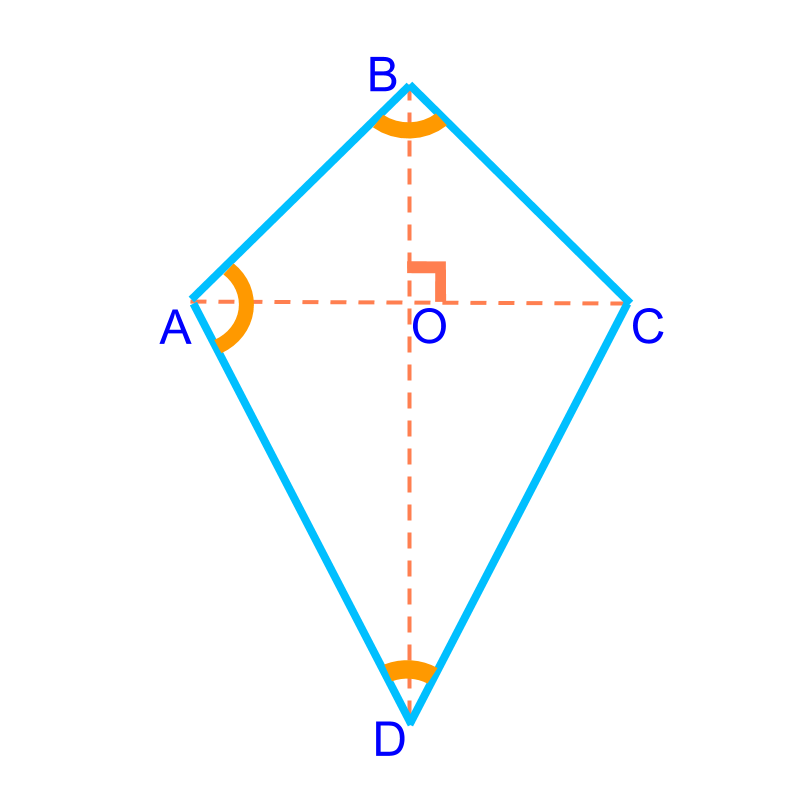
A quadrilateral is defined by 55 parameters. For a kite, the following properties provide additional dependency of parameters
• two pair of equal sides
• major diagonal perpendicularly bisects the minor diagonal. the diagonal that divides the kite into two congruent triangles is called major. The other diagonal is the minor diagonal.
• major diagonal bisects the angles at the vertices
• two equal opposite angles and two unequal opposite angles -- all sum up to 360∘360∘
A kite is defined by 33 parameters.
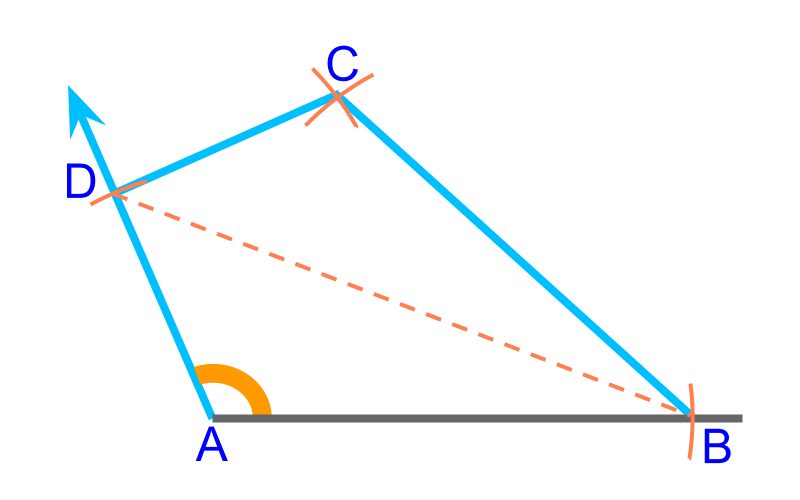
To construct a kite, 22 unequal sides (¯AB¯¯¯¯¯¯AB, ¯BC) and the angle between them (∠B) are given. This is illustrated in the figure. To construct, consider this as an SAS triangle in BAD and SSS triangle BCD
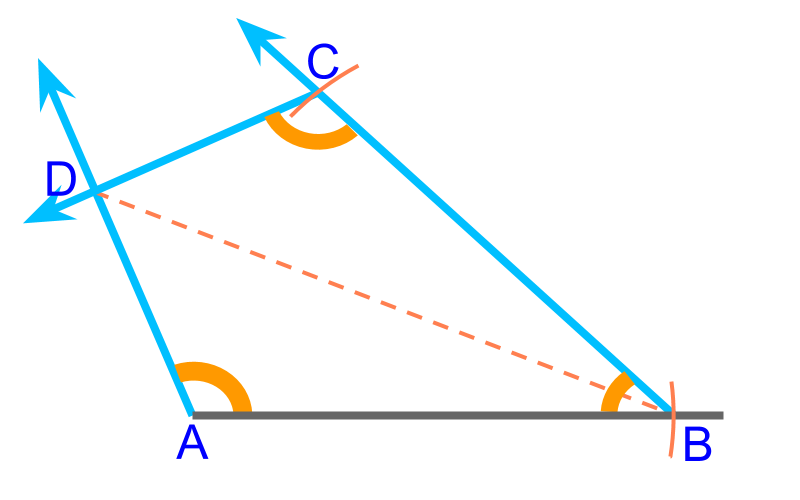
To construct a kite, a side (¯AB) and 2 angles (∠A,∠B) are given. This is illustrated in the figure. To construct, consider as an SAS triangle in ABC and ASA triangle ACD.
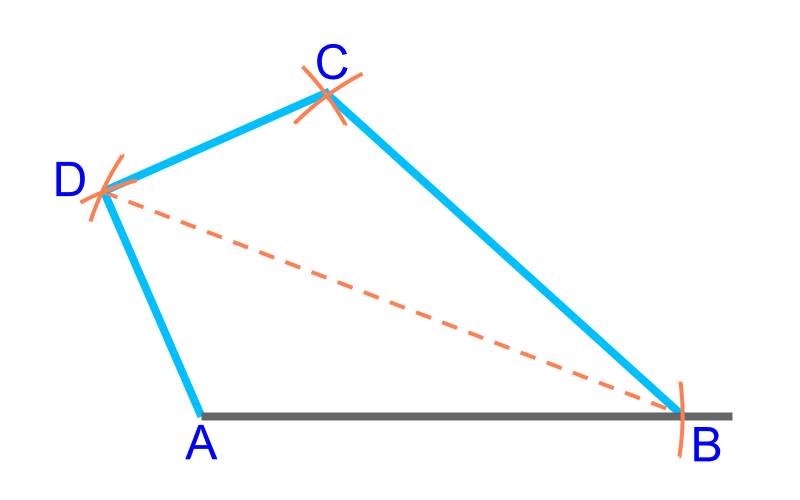
To construct a kite, 2 unequal sides (¯AB, ¯BC) and the major diagonal (¯BD) are given. This is illustrated in the figure. To construct, consider as two SSS triangles in ABD and BDC
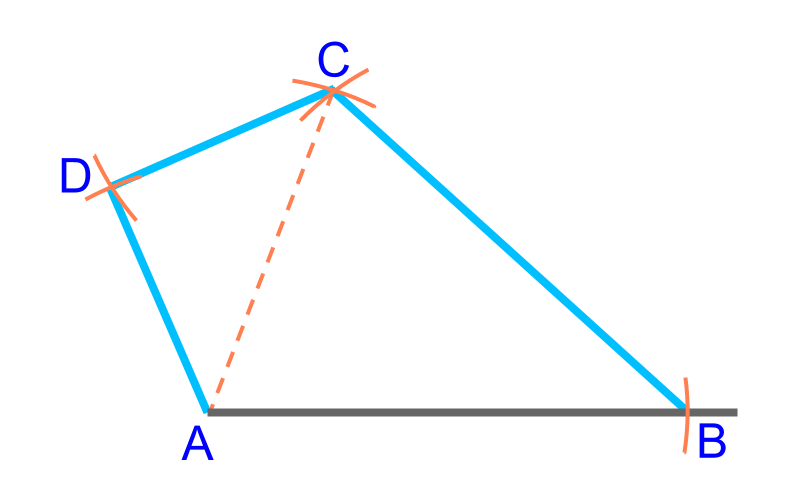
To construct a kite, 2 unequal sides (¯AB, ¯BC) and the minor diagonal (¯AC) are given. This is illustrated in the figure. To construct, consider as two isosceles SSS triangles in ABC and ACD
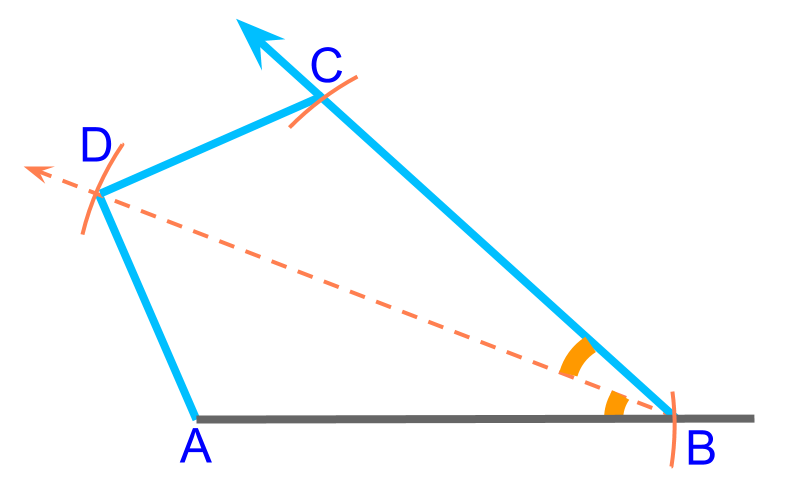
To construct a kite, a side (¯AB), the major diagonal (¯BD), and angle (∠ABD) between them are given. This is illustrated in the figure. To construct, consider this as two SAS triangles in ABD and DBC
summary

Construction of Kite :
Properties of Kite:
• two pair of equal sides
• major diagonal perpendicularly bisects the minor diagonal. The diagonal that divides the kite as two congruent triangles is the major diagonal.
• major diagonal bisects the angles at the vertices
• two equal opposite angles and two unequal opposite angles sum up to 360∘
The formulations of questions
• 2 unequal sides and the angle between them
• 1 side and 2 angles
• 2 unequal sides and the major diagonal
• 2 unequal sides and the minor diagonal
• 1 side, major diagonal and the angle between them
Outline
The outline of material to learn "Construction / Practical Geometry at 6-8th Grade level" is as follows.
Note: click here for detailed outline of "constructions / practical geometry".
• Four Fundamenatl elements
→ Geometrical Instruments
→ Practical Geometry Fundamentals
• Basic Shapes
→ Copying Line and Circle
• Basic Consustruction
→ Construction of Perpendicular Bisector
→ Construction of Standard Angles
→ Construction of Triangles
• Quadrilateral Forms
→ Understanding Quadrilaterals
→ Construction of Quadrilaterals
→ Construction of Parallelograms
→ Construction of Rhombus
→ Construction of Trapezium
→ Construction of Kite
→ Construction of Rectangle
→ Construction of Square